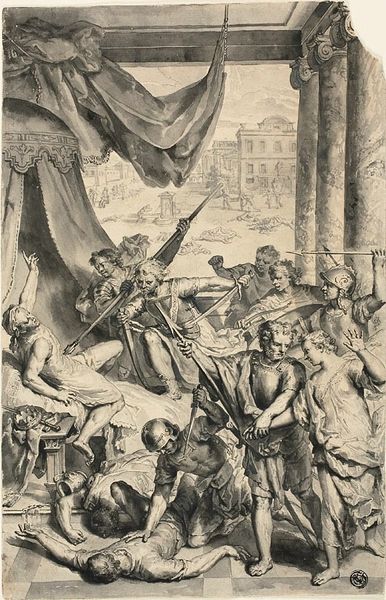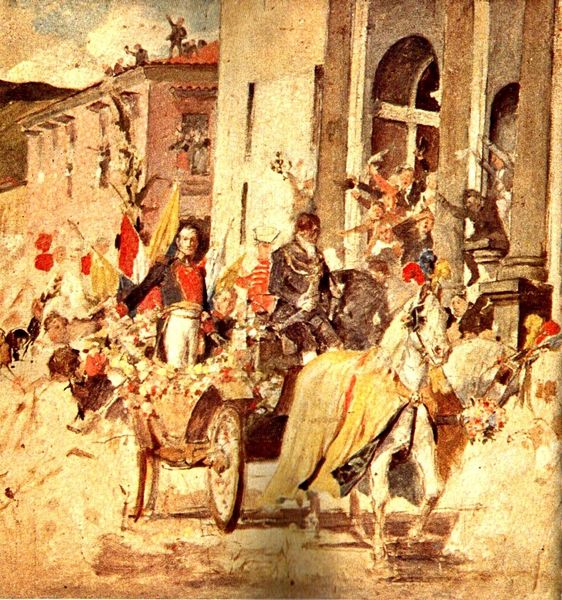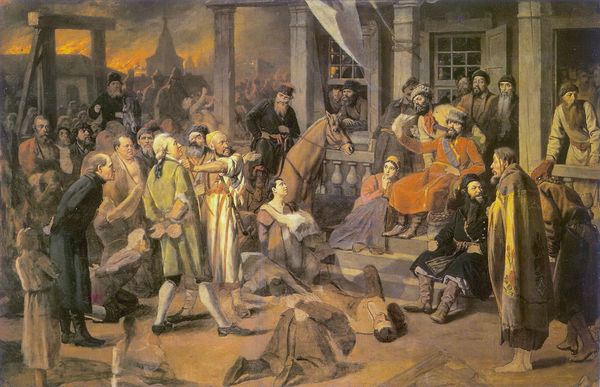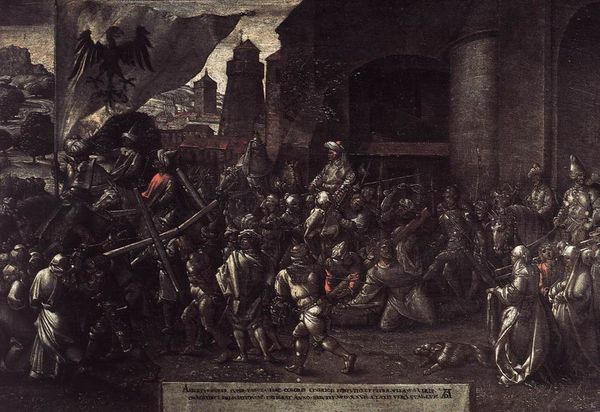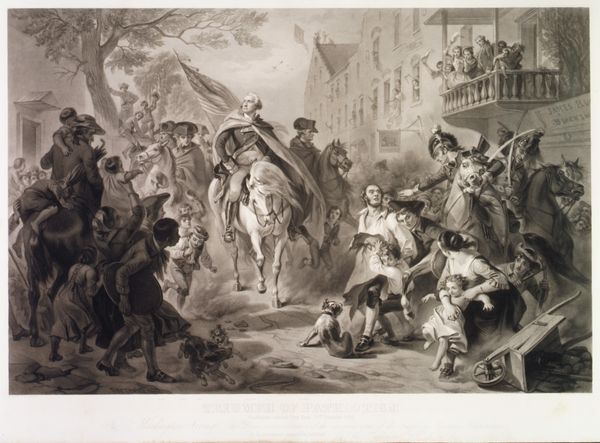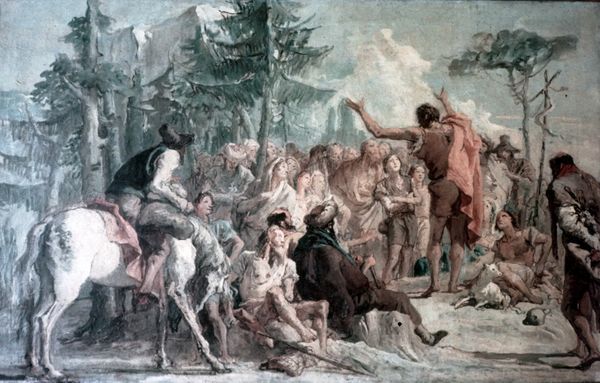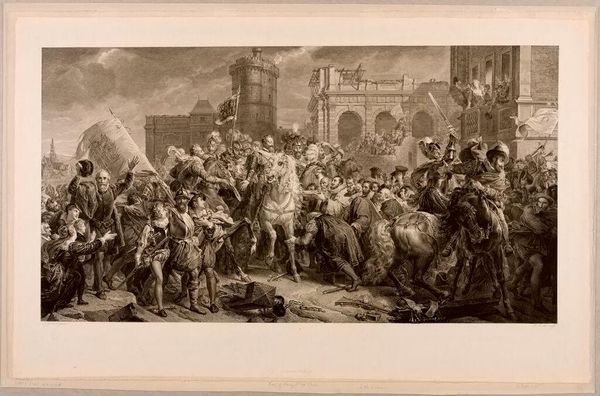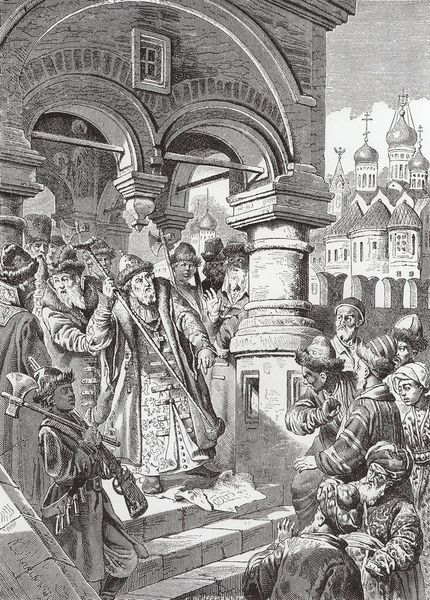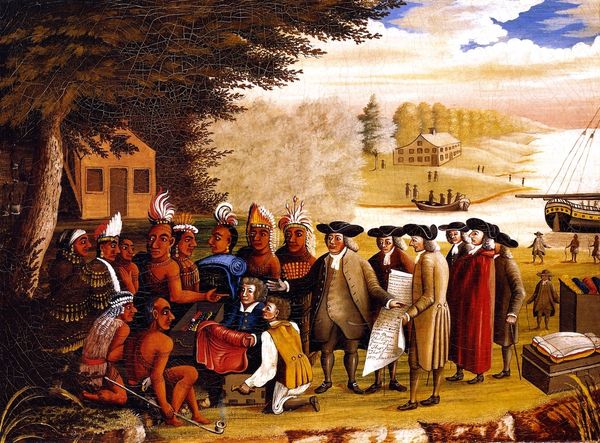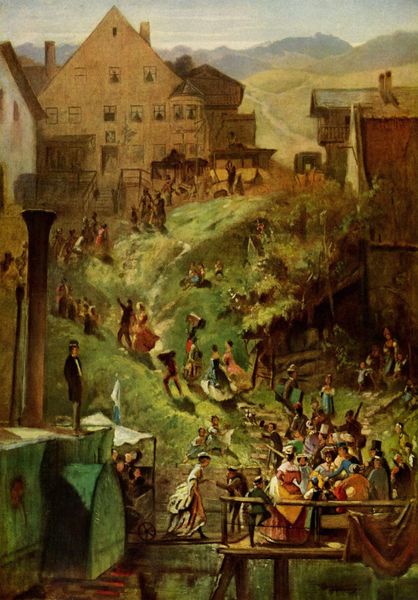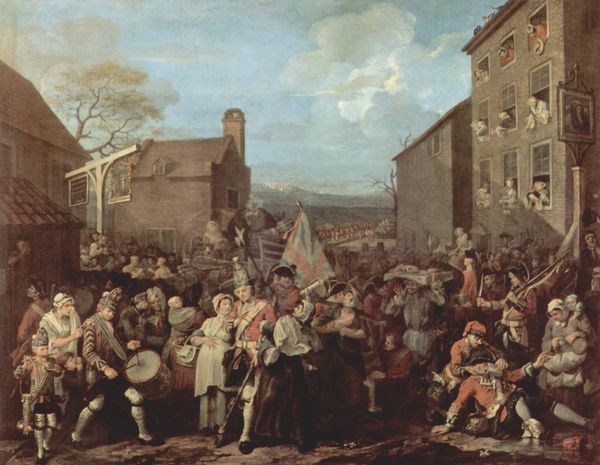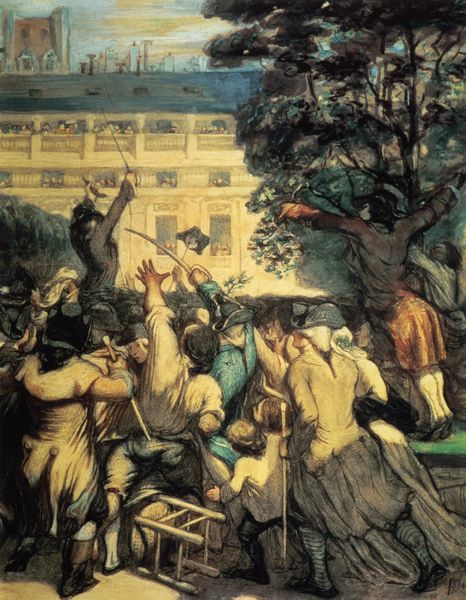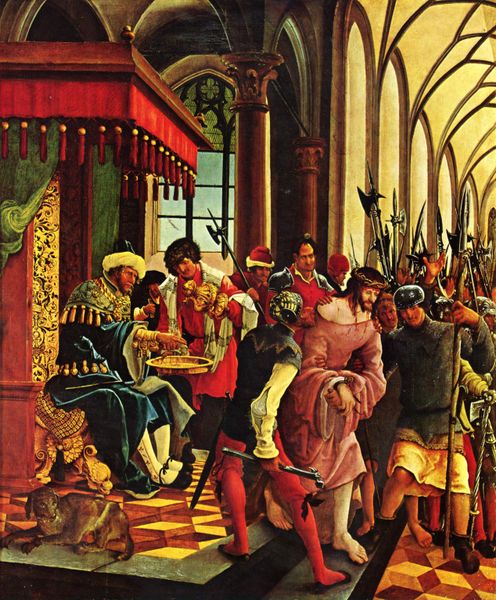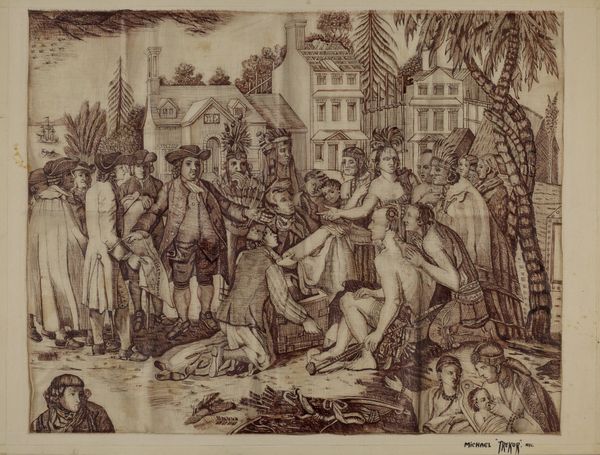
painting, oil-paint
#
narrative-art
#
painting
#
oil-paint
#
mannerism
#
genre-painting
#
history-painting
#
northern-renaissance
#
mixed medium
#
mixed media
Copyright: Public domain
Editor: This is "Apostles Peter and John," painted by Pieter Aertsen around 1575. It's oil on canvas and resides in the Hermitage. It strikes me as a surprisingly busy and chaotic scene for a religious painting, not at all what I'd expect. What’s your interpretation of this piece? Curator: It's interesting, isn't it? Aertsen's work often blended genre scenes with religious narratives, reflecting the social and political climate of the Northern Renaissance. While titled "Apostles Peter and John," it depicts their healing ministry, framed within a bustling marketplace. Consider the role of the market itself: it was a place of not just commerce, but social exchange, a microcosm of society. The painting then poses a question: who gets to participate in this marketplace and what prevents them from being full participants? Editor: So the setting itself is making a statement. How would that reflect back then? Curator: Absolutely. Think about the rise of humanism at the time and how it was shaping perspectives of the poor and vulnerable. The inclusion of everyday life—the stalls, the various people engaging in commerce—sets up a tension with the divine acts. Are the apostles being idealized here, or humanized? Are they elevated above the crowd, or participating within it? Editor: I see, it blurs the line between the sacred and secular. What would be the function of placing this imagery inside the marketplace? Curator: Well, who, historically, benefits from these paintings being placed within market environments? Editor: I guess this challenges how we usually think about religious art in that era, showing the divine in an ordinary, perhaps even political, way. Curator: Precisely! This work prompts us to consider how art can reflect, shape, and even critique the world around it, and its own role within society. Food for thought, isn't it?
Comments
No comments
Be the first to comment and join the conversation on the ultimate creative platform.
